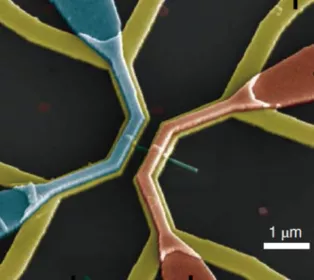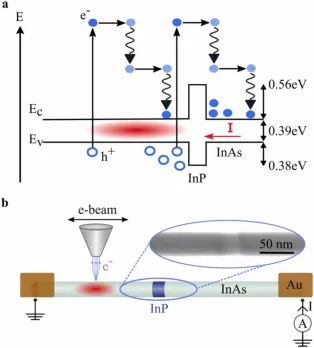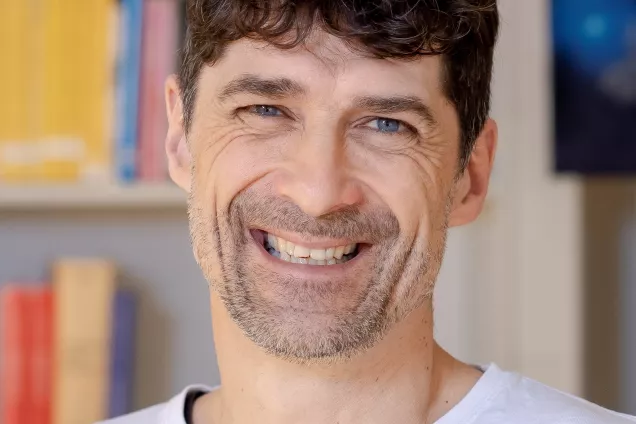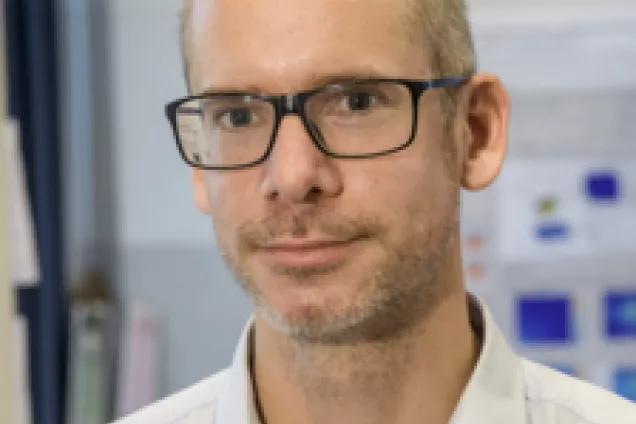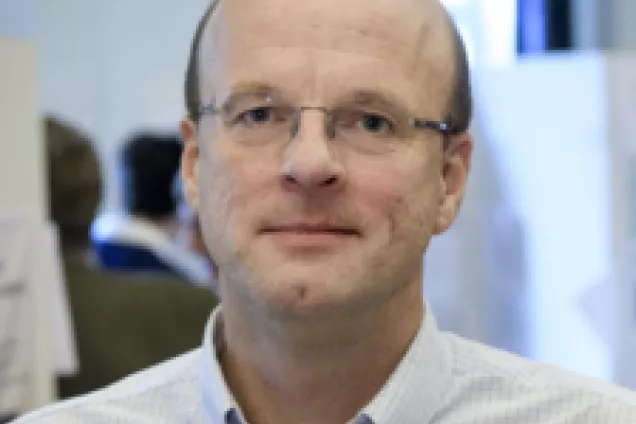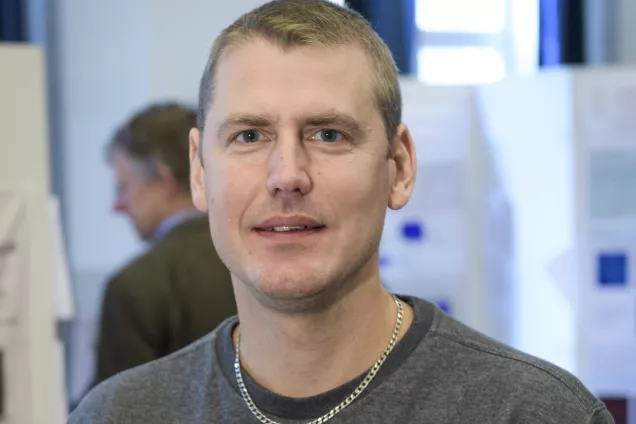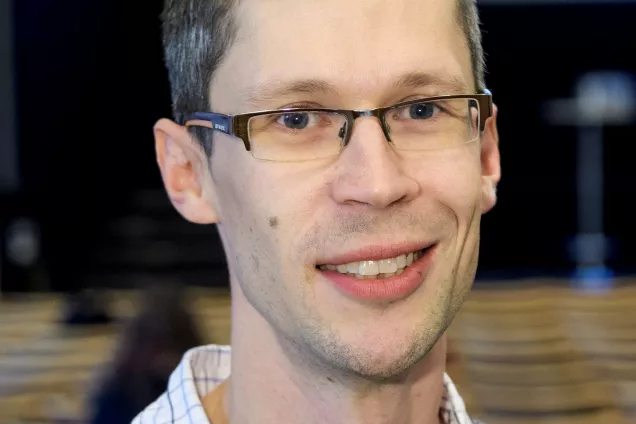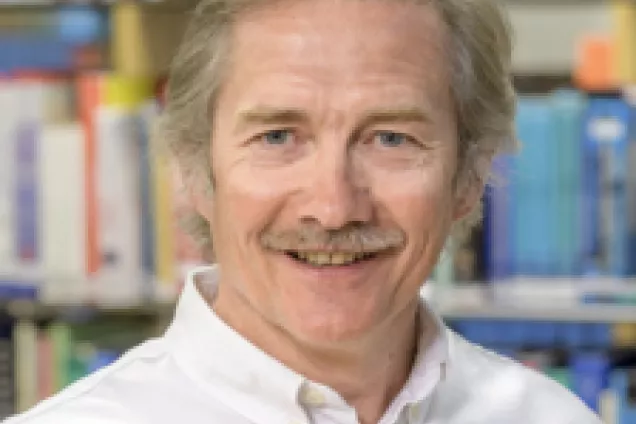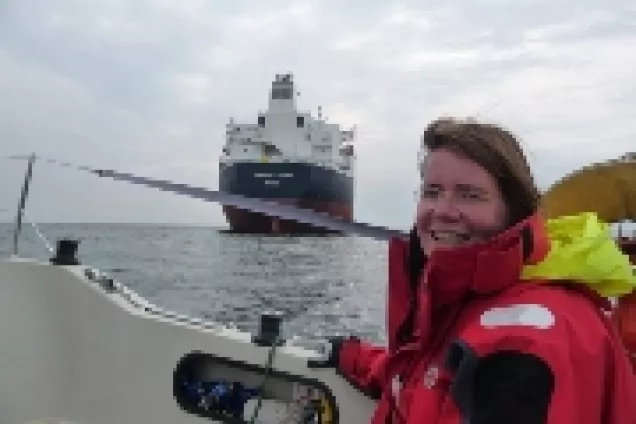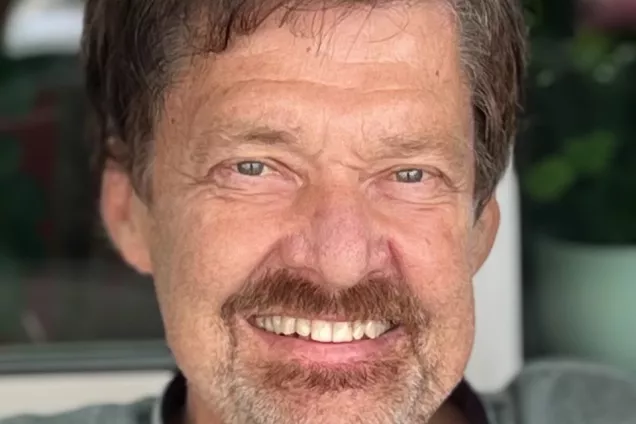Nanothermodynamics for optoelectronic semiconductor devices
Thermal fluctuations and non-equilibrium carriers can significantly alter the physical properties of nanoscale systems, and could be used to enhance the efficiency of energy-conversion therein. Here we describe our research to exploit these effects to boost the performance of nanoscale optoelectronic devices in a project funded by the Knut and Alice Wallenberg Foundation. Grant number: 2016.0089
Thermal fluctuations and non-equilibrium carriers can significantly alter the physical properties of nanoscale systems, and could be used to enhance the efficiency of energy-conversion therein. However, this fact has so far not been exploited to boost the performance of nanoscale optoelectronic devices, leaving the potential of using such effects to develop next-generation energy technologies untapped. Here we use stochastic thermodynamics to develop new paradigms for optoelectronic energy conversion and to explore how charge relaxation, photonic effects and fluctuations determine the performance of nanostructure-based devices, with a specific focus on III-V nanowires, which are ideal to employ and control these effects.
In this video, Patrick Potts explains what stochastic thermodynamics is and what experiments can be made in order to build nanoscale machines
Nanoscale heat engines
At the nanoscale, heat engines can reach very high efficiencies. The miniaturization has been possible because the engine does not have pistons and valves but is only cycling around particles. The picture shows how this looks under the microscope.
The nanowire with the quantum dot in the middle is embedded between a hot and a cold side. An electron that traverses the quantum dot removes heat from the hot reservoir, converts part of it into useful work, in the form of an electrical current, and deposits the remaining part as heat in the cold reservoir (which is considered lost). This may look simple, but actually the experiment is quite challenging. The requirement for an accurate reservoir thermometry, tunable and electrically non-invasive reservoir heating and a quantum dot that approximates an ideal energy filter is not easy to fulfil. Here, the authors have managed with an experimental device consisting of an InAs/InP nanowire quantum dot in contact with metallic leads. Top heaters were used for the effective thermal biasing of the quantum dot. Possible application areas for this are sensors or wearables.
Hot carrier photovoltaics devices
One way to increase the efficiency of solar cells is by reducing losses due to the thermalization of photogenerated carriers above the absorber bandgap, by using energy filters to harvest the kinetic energy of the carriers before these cool to the lattice temperature. The challenge is that the thermalization is a very fast process, happening in femtoseconds. Here, the project team has made significant progress by using nanowires-based devices consisting of InP and InAs. InP heterostructures are used as energy filters in order to thermoelectrically harvest the energy of hot electrons photogenerated in InAs absorber segments. The obtained photovoltage depends on the heterostructure design of the energy filter and is therefore tunable. By using a high-resistance, thermionic barrier, an open-circuit voltage is obtained that is in excess of the Shockley–Queisser limit.
However, in these first experiments, the location of light absorption, and therefore the precise mechanism of hot-carrier extraction, was uncontrolled. In a more advanced setting, plasmonic nanoantennas were combined with InAs-InP-InAs nanowire devices to enhance light absorption within a subwavelength region near an InP energy barrier that serves as an energy filter. From photon-energy- and irradiance-dependent photocurrent and photovoltage measurements, we find that photocurrent generation is dominated by internal photoemission of nonthermalized hot electrons when the photoexcited electron energy is above the barrier and by photothermionic emission when the energy is below the barrier.
To enable improvement of the quantum efficiency, a deeper understanding and control over electron-hole pair-generation in the nanowire is required. Therefore, electron-beam induced current measurements with high spatial resolution has been performed. The presented results, enabled by the high spatial resolution of an electron beam, support the concept that a potential barrier embedded in a nanowire can be used to separate hot charge carriers, but only within a distance of about 100 nm from the barrier in this material combination.
Double quantum dots
Double quantum dots is an excellent system to control electronic states. Quantum dots behave as artificial atoms but with properties that can be changed during the experiments using electric and magnetic fields. Our primary focus is to understand and control spin and orbital states in quantum dots and coupled quantum dots.
To make each quantum dot individually addressable is not an easy feat. The team managed to fabricate precisely aligned gate electrodes allowing them to probe and control each quantum dot independently. In a further development of the system, the team added a specially designed local metallic joule-heater to the double quantum dot system and was thus able to convert heat into electrical power. The underlying mechanisms are phonon-driven processes as well as conventional thermoelectric transport.
Photodetectors
Toward our aim to design, fabricate and test optoelectronic devices that achieve higher efficiency and new functionality, the project has developed infrared photodetectors. The devices consisted of 3 million vertical nanowires grown by MOVPE from periodically ordered Au seed particles. During growth, 20 quantum disks consisting of In, As and P were embedded in the nanowires. Due to the embedded quantum discs, the photoresponse covers a broad spectral range as well as a record high responsivities at wavelengths of 980 nm and 532 nm.
Theory
Accurate theories and models are required to understand and model the optoelectronic energy-conversion devices proposed here. For small, non-equilibrium systems, this means replacing macroscopic thermodynamic relations with fluctuation theorems which can account, e.g., for entropy generated, or work produced, in a transient thermodynamic process or during steady state conditions. In addition, stochastic thermodynamics provides a unified description of the fundamental connection between work, entropy and information, manifested in e.g. the Szilard engine.
The project team
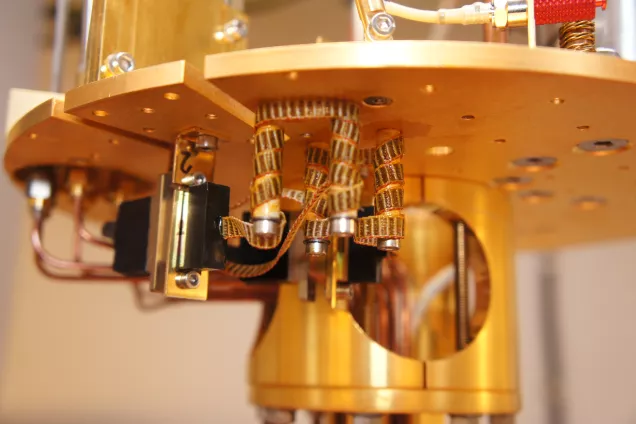
KAW project on Nanothermodynamics
Analyze heat-motion to find new ways for energy-conversion
Project Aims:
- To design, fabricate and test optoelectronic energy converters based on hot-carrier effects and fluctuations to achieve higher efficiency and new functionality.
- To characterize, in NWs, the fluctuations, non-equilibrium states and relaxation processes that determine device performance, by using local probe techniques.
- To develop stochastic thermodynamics (STD) theory for nanoscale solid-state devices, including quantum few-body effects.
- To use photonic and electronic modeling to guide device design and to understand device performance.
Publications that resulted from this project
Experimental Verification of the Work Fluctuation-Dissipation Relation.
Barker, D., M. Scandi, S. Lehmann, C. Thelander, K. A. Dick, M. Perarnau-Llobet, and V. F. Maisi. Physical Review Letters, 128 (2022).
https://doi.org/10.1103/PhysRevLett.128.040602
Optical-Beam-Induced Current in InAs/InP Nanowires for Hot-Carrier Photovoltaics.
Fast, J., Y. P. Liu, Y. Chen, L. Samuelson, A. M. Burke, H. Linke, and A. Mikkelsen. Acs Applied Energy Materials, 5, 6, 7728–7734 (2022).
https://doi.org/10.1021/acsaem.2c01208
Development and characterization of photovoltaic tandem-junction nanowires using electron-beam-induced current measurements.
Hrachowina, L., E. Barrigon, and M. T. Borgstrom. Nano Research, 15, 8510–8515 (2022).
https://doi.org/10.1007/s12274-022-4469-1
Realization of axially defined GaInP/InP/InAsP triple-junction photovoltaic nanowires for high-performance solar cells.
Hrachowina, L., Y. Chen, E. Barrigon, R. Wallenberg, and M. T. Borgstrom. Materials Today Energy, 27, 101050 (2022).
https://doi.org/10.1016/j.mtener.2022.101050
Time-resolved photoluminescence studies of single interface wurtzite/zincblende heterostructured InP nanowires.
Jash, A., A. Yangui, S. Lehmann, I. G. Scheblykin, K. A. Dick, A. Gustafsson, and M. E. Pistol. Appl. Phys. Lett. 120, 113102 (2022).
https://doi.org/10.1063/5.0083159
Probabilistically violating the first law of thermodynamics in a quantum heat engine.
Kerremans, T., P. Samuelsson, and P. P. Potts. SciPost Phys. 12, 168 (2022)
https://doi.org/10.21468/SciPostPhys.12.5.168
Combining two-photon photoemission and transient absorption spectroscopy to resolve hot carrier cooling in 2D perovskite single crystals: the effect of surface layer.
Lin, W. H., M. L. Liang, Y. R. Niu, Z. S. Chen, M. Cherasse, J. Meng, X. S. Zou, Q. Zhao, H. F. Geng, E. Papalazarou, M. Marsi, L. Perfetti, S. E. Canton, K. B. Zheng, and T. Pullerits. Journal of Materials Chemistry C, 10, 16751-16760 (2022).
https://doi.org/10.1039/D2TC03111F
Droplet-superfluid compounds in binary bosonic mixtures.
Tengstrand, M. N., and S. M. Reimann. Physical Review A, 105, 033319 (2022).
https://doi.org/10.1103/PhysRevA.105.033319
Excited States and Their Dynamics in CdSe Quantum Dots Studied by Two-Color 2D Spectroscopy.
Wang, Z. J., N. Lenngren, E. Amarotti, A. Hedse, K. Zidek, K. B. Zheng, D. Zigmantas, and T. Pullerits. Journal of Physical Chemistry Letters, 13: 1266-71 (2022).
https://doi.org/10.1021/acs.jpclett.1c04110
Quantum confinement suppressing electronic heat flow below the Wiedemann-Franz law.
D. Majidi, M. Josefsson, M. Kumar, M. Leijnse, L. Samuelson, H. Courtois, C. B. Winkelmann, and V. F. Maisi. Nano Lett. 22, 2, 630–635 (2022)
https://doi.org/10.1021/acs.nanolett.1c03437
Nonresonant two-level transitions: Insights from quantum thermodynamics.
A. Wacker. Rev. A 105, 012214 (2022)
https://doi.org/10.1103/PhysRevA.105.012214
Dynamic impurities in two-dimensional topological-insulator edge states.
S. Wozny, M. Leijnse, SI. Erlingsson. Phys. Rev. B 104, 205418 (2021)
https://doi.org/10.1103/PhysRevB.104.205418
Dissipation Reduction and Information-to-Measurement Conversion in DNA Pulling Experiments with Feedback Protocols.
M. Rico-Pasto, RK. Schmitt, M. Ribezzi-Crivellari, JMR. Parrondo, H. Linke, J. Johansson, F. Ritort. Phys. Rev. X 11, 031052 (2021).
https://doi.org/10.1103/PhysRevX.11.031052
Positivity of entropy production for the three-level maser.
AAS. Kalaee and A. Wacker. Phys. Rev. A 103, 012202 (2021)
https://doi.org/10.1103/PhysRevA.103.012202
Violating the thermodynamic uncertainty relation in the three-level maser.
AAS. Kalaee, A. Wacker, and PP. Potts. Phys. Rev. E 104, L012103 (2021).
https://doi.org/10.1103/PhysRevE.104.L012103
A thermodynamically consistent Markovian master equation beyond the secular approximation
PP. Potts, AAS. Kalaee, and A. Wacker. New J. Phys. 23 123013 (2021).
https://doi.org/10.1088/1367-2630/ac3b2f
Characterization of electrostatically defined bottom-heated InAs nanowire quantum dot systems.
S. Dorsch, S. Fahlvik and A. M. Burke. New J. Phys. 23 125007 (2021).
https://doi.org/10.1088/1367-2630/ac434c
Gate control, g factors, and spin-orbit energy of p-type GaSb nanowire quantum dot devices.
S. Dorsch, I-P. Yeo, S. Lehmann, K. Dick, C. Thelander, and A. Burke. Phys. Rev. B 103, L241411(2021).
https://doi.org/10.1103/PhysRevB.103.L241411
Semiconductor nanowire array for transparent photovoltaic applications.
Y. Chen, L. Hrachowina, E. Barrigon, J. P. Beech, D. Alcer, R. Lyttleton, R. Jafari Jam, L. Samuelson, H. Linke, and M. Borgström. Appl. Phys. Lett. 118, 191107 (2021).
https://doi.org/10.1063/5.0046909
Positivity of entropy production for the three-level maser.
A.A.S. Kalaee and A. Wacker. Physical Review A 103, 012202 (2021)
https://doi.org/10.1103/PhysRevA.103.012202
Heat driven transport in serial double quantum dot devices.
S. Dorsch, A. Svilans, M. Josefsson, B. Goldozian, M. Kumar, C. Thelander, A. Wacker, A. Burke. Nano Letters 21, 988 (2021).
https://doi.org/10.1021/acs.nanolett.0c04017
Comparison of Triethylgallium and Trimethylgallium Precursors for GaInP Nanowire Growth.
D. Alcer, A. P. Saxena, L.Hrachowina, X. Zou, A. Yartsev, M. T. Borgström. Phys. Status Solidi B, 258: 2000400 (2021).
https://doi.org/10.1002/pssb.202000400
Electron extraction from excited quantum dots with higher order Coulomb scattering.
A.A.S. Kalaee and A. Wacker: Journal of Physics Communications 4, 035011 (2020)
https://doi.org/10.1088/2399-6528/ab7e85
Hot-carrier separation in heterostructure nanowires observed by electron-beam induced current.
Fast, J; E. Barrigon, M. Kumar, Y. Chen, L. Samuelson, M. Borgström, A. Gustafsson, S. Limpert, A. Burke, H. Linke. Nanotechnology, 31 (39) 394004 (2020).
DOI: 10.1088/1361-6528/ab9bd7
Light current-voltage measurements of single, as-grown, nanowire solar cells standing vertically on a substrate.
E. Barrigón, L. Hrachowina, M. T. Borgström. Nano Energy 78 (2020) 105191.
https://doi.org/10.1016/j.nanoen.2020.105191
Template-assisted vapour–liquid–solid growth of InP nanowires on (001) InP and Si substrates.
R. Jafari Jam, A. R. Persson, E. Barrigón, M. Heurlin, I. Geijselaers, V. J. Gómez, O. Hultin, L. Samuelson, M. T. Borgström and H. Pettersson. Nanoscale, 2020,12, 888-894
https://doi.org/10.1039/C9NR08025B
Embedded sacrificial AlAs segments in GaAs nanowires for substrate reuse.
R. Jafari Jam, J. P. Beech, X. Zeng, J. Johansson, L. Samuelson, H. Pettersson, and M. T. Borgström. Nanotechnology 31 (2020) 204002.
https://doi.org/10.1088/1361-6528/ab7680
Self-Limiting Polymer Exposure for Vertical Processing of Semiconductor Nanowire-Based Flexible Electronics.
Y. Zhang, L. Hrachowina, E. Barrigón, I. Åberg, and M. Borgström. ACS Applied Nano Materials 2020 3 (8), 7743-7749.
https://dx.doi.org/10.1021/acsanm.0c01314
Hot-Carrier Extraction in Nanowire-Nanoantenna Photovoltaic Devices.
Chen, IJ; S. Limpert, W. Metaferia, C. Thelander, L. Samuelson, F. Capasso, A. Burke, H. Linke. Nano Letters 20 (6) p. 4064-4072, (2020)
DOI: 10.1021/acs.nanolett.9b04873
Double quantum-dot engine fueled by entanglement between electron spins.
Josefsson, M. and M. Leijnse. Physical Review B 2020, 101(8).
https://doi.org/10.1103/PhysRevB.101.081408
Radiation Tolerant Nanowire Array Solar Cells.
P. Espinet-Gonzalez, E. Barrigón, G. Otnes, G. Vescovi, C. Mann, R. M. France, A. J. Welch, M. S. Hunt, D. Walker, M. D. Kelzenberg, I. Åberg, M. T. Borgström, L. Samuelson, and H. A. Atwater. ACS Nano 2019, 13, 11, 12860–12869.
https://doi.org/10.1021/acsnano.9b05213
Effect of hydrogen chloride etching on carrier recombination processes of indium phosphide nanowires.
X. Su, X. Zeng, H. Němec, X. Zou, W. Zhang, M. T. Borgström and A. Yartsev. Nanoscale, 2019,11, 18550-18558
https://doi.org/10.1039/C9NR03187A
Individually addressable double quantum dots formed with nanowire polytypes and identified by epitaxial markers.
Barker, D.; S. Lehmann, L. Namazi, M. Nilsson, C. Thelander, K. A. Dick and V. F. Maisi . Applied Physics Letters 2019, 114(18).
https://doi.org/10.1063/1.5089275
Differentiation of True Nonlinear and Incoherent Mixing of Linear Signals in Action-Detected 2D Spectroscopy.
Alex Arash Sand Kalaee, Fikeraddis Damtie, and Khadga Jung Karki. J. Phys. Chem. A, 123 , 4119 (2019)
https://doi.org/10.1021/acs.jpca.9b01129
Optimal power and efficiency of single quantum dot heat engines: Theory and experiment.
Josefsson, M., A. Svilans, H. Linke and M. Leijnse. Physical Review B 2019, 99(23).
https://doi.org/10.1103/PhysRevB.99.235432
Side-gated, enhancement mode, InAs nanowire double quantum dot devices-toward controlling transverse electric fields in spin-transport measurements.
Dorsch, S., B. Dalelkhan, S. Fahlvik and A. M. Burke. Nanotechnology 2019 30(14).
https://doi.org/10.1088/1361-6528/aafe5a
High Responsivity of InP/InAsP Nanowire Array Broadband Photodetectors Enhanced by Optical Gating.
Karimi, M., X. L. Zeng, B. Witzigmann, L. Samuelson, M. T. Borgström and H. Pettersson. Nano Letters 2019, 19(12): 8424-8430.
https://doi.org/10.1021/acs.nanolett.9b02494
Bosonic Szilard engine assisted by Feshbach resonances.
Bengtsson, J., M. N. Tengstrand and S. M. Reimann. Physical Review 2018, A 97(6).
https://doi.org/10.1103/PhysRevA.97.062128
Quantum Szilard Engine with Attractively Interacting Bosons.
Bengtsson, J., M. N. Tengstrand, A. Wacker, P. Samuelsson, M. Ueda, H. Linke and S. M. Reimann. Physical Review Letters, 2018, 120(10).
https://doi.org/10.1103/PhysRevLett.120.100601
Phenomenological position and energy resolving Lindblad approach to quantum kinetics.
G. Kiršanskas, M. Franckié, and A. Wacker. Physical Review B 97, 035432 (2018).
https://doi.org/10.1103/PhysRevB.97.035432
Thermoelectric Power Factor Limit of a 1D Nanowire.
Chen, I. J., A. Burke, A. Svilans, H. Linke and C. Thelander. Physical Review Letters, 2018, 120(17).
https://doi.org/10.1103/PhysRevLett.120.177703
A quantum-dot heat engine operating close to the thermodynamic efficiency limits.
Josefsson, M., A. Svilans, A. M. Burke, E. A. Hoffmann, S. Fahlvik, C. Thelander, M. Leijnse and H. Linke.
Nature Nanotechnology 2018, 13(10): 920–924.
https://doi.org/10.1038/s41565-018-0200-5
Intersubband Quantum Disc-in-Nanowire Photodetectors with Normal-Incidence Response in the Long-Wavelength Infrared.
Karimi, M., M. Heurlin, S. Limpert, V. Jain, X. L. Zeng, I. Geijselaers, A. Nowzari, Y. Fu, L. Samuelson, H. Linke, M. T. Borgström and H. Pettersson. Nano Letters 2018, 18(1): 365-372.
https://doi.org/10.1021/acs.nanolett.7b04217
Influence of Quantum Interference on the Thermoelectric Properties of Molecular Junctions.
Miao, R. J., H. L. Xu, M. Skripnik, L. J. Cui, K. Wang, K. G. L. Pedersen, M. Leijnse, F. Pauly, K. Warnmark, E. Meyhofer, P. Reddy and H. Linke . Nano Letters, 2018, 18(9): 5666-5672.
https://doi.org/10.1021/acs.nanolett.8b02207
Thermoelectric Characterization of the Kondo Resonance in Nanowire Quantum Dots.
Svilans, A., M. Josefsson, A. M. Burke, S. Fahlvik, C. Thelander, H. Linke and M. Leijnse. Physical Review Letters, 2018, 121(20).
https://doi.org/10.1103/PhysRevLett.121.206801
Single-nanowire, low-bandgap hot carrier solar cells with tunable open-circuit voltage.
Limpert, S., A. Burke, I. J. Chen, N. Anttu, S. Lehmann, S. Fahlvik, S. Bremner, G. Conibeer, C. Thelander, M. E. Pistol and H. Linke . Nanotechnology, 2017, 28(43).
https://doi.org/10.1088/1361-6528/aa8984


